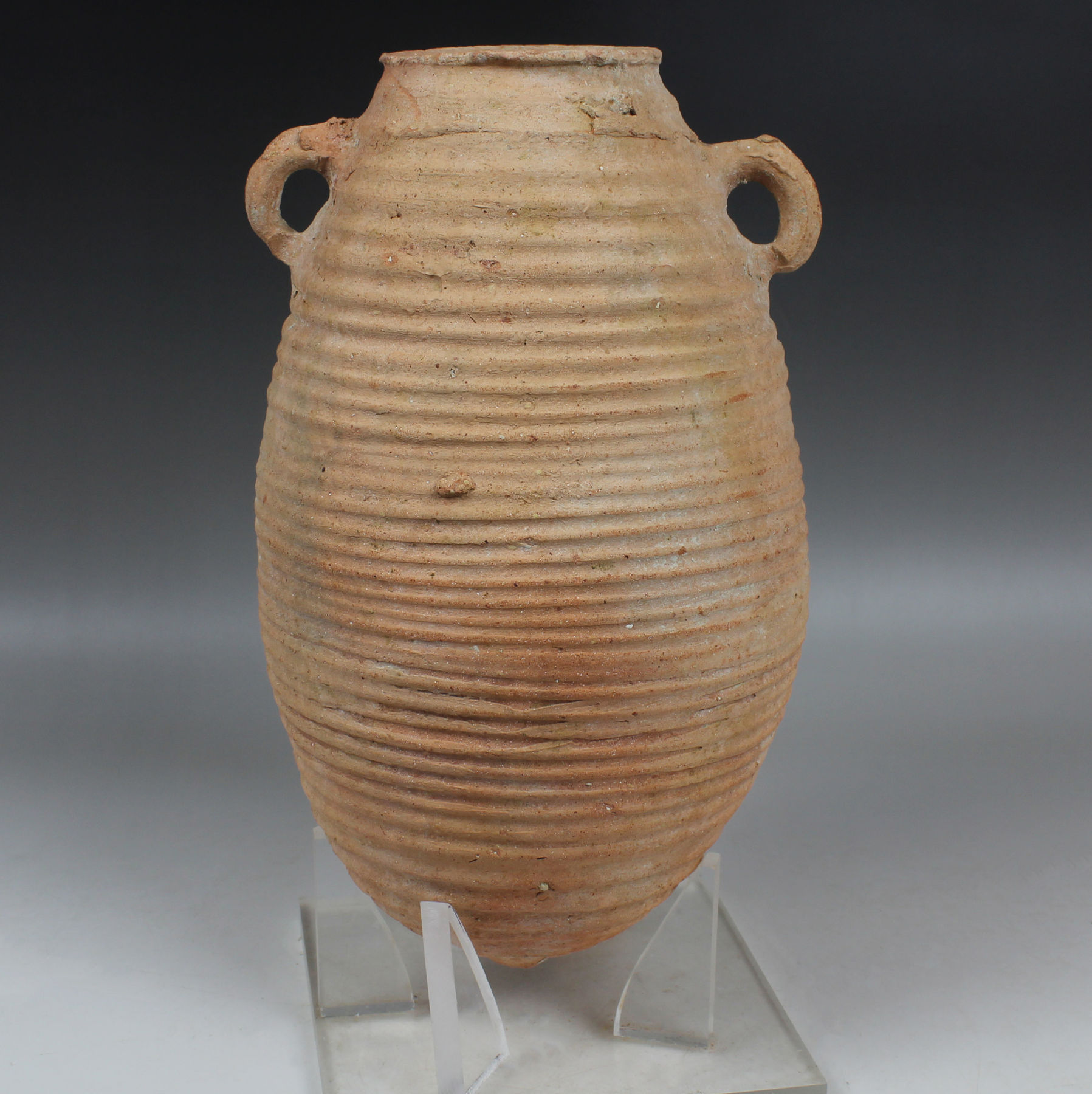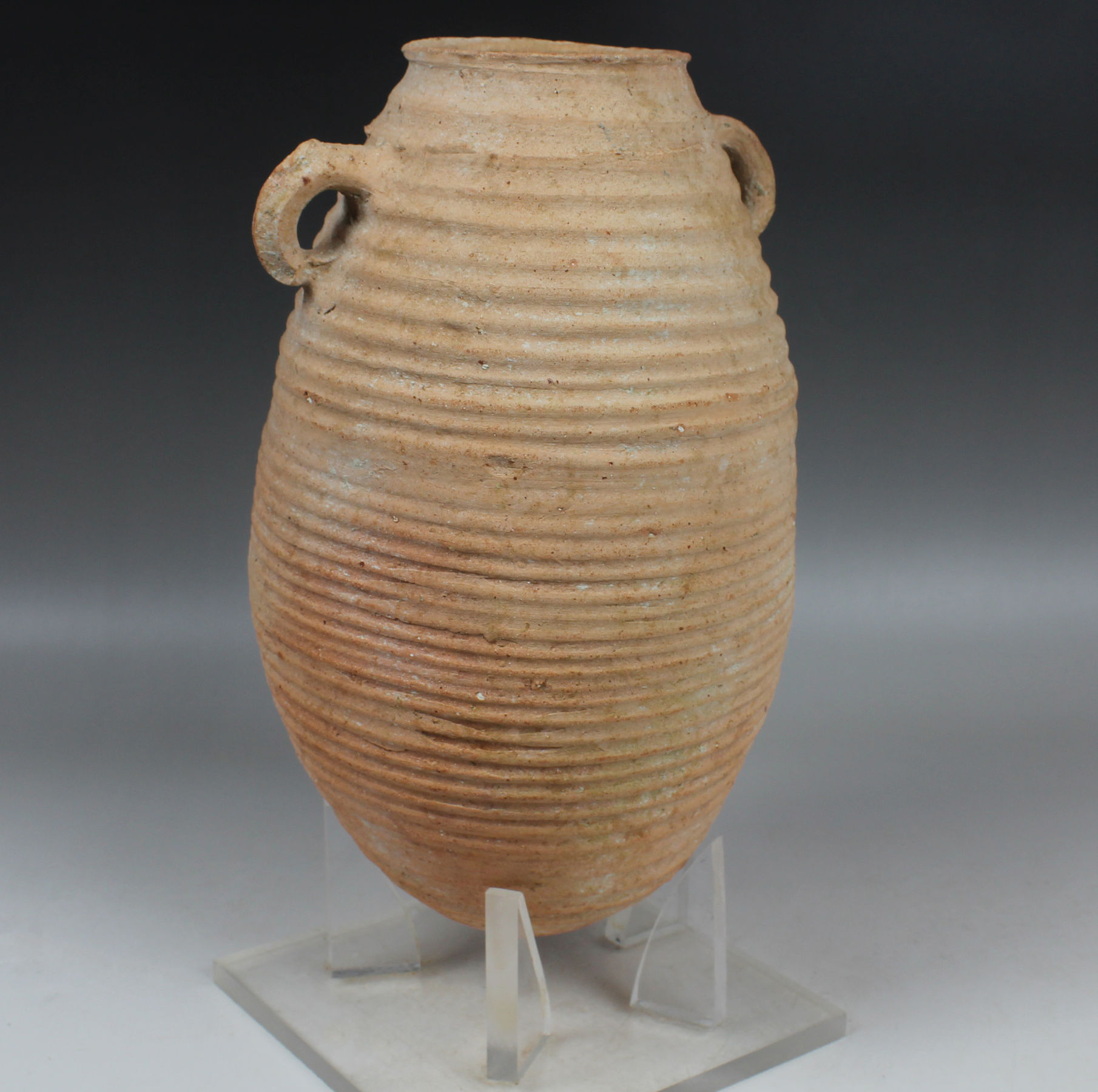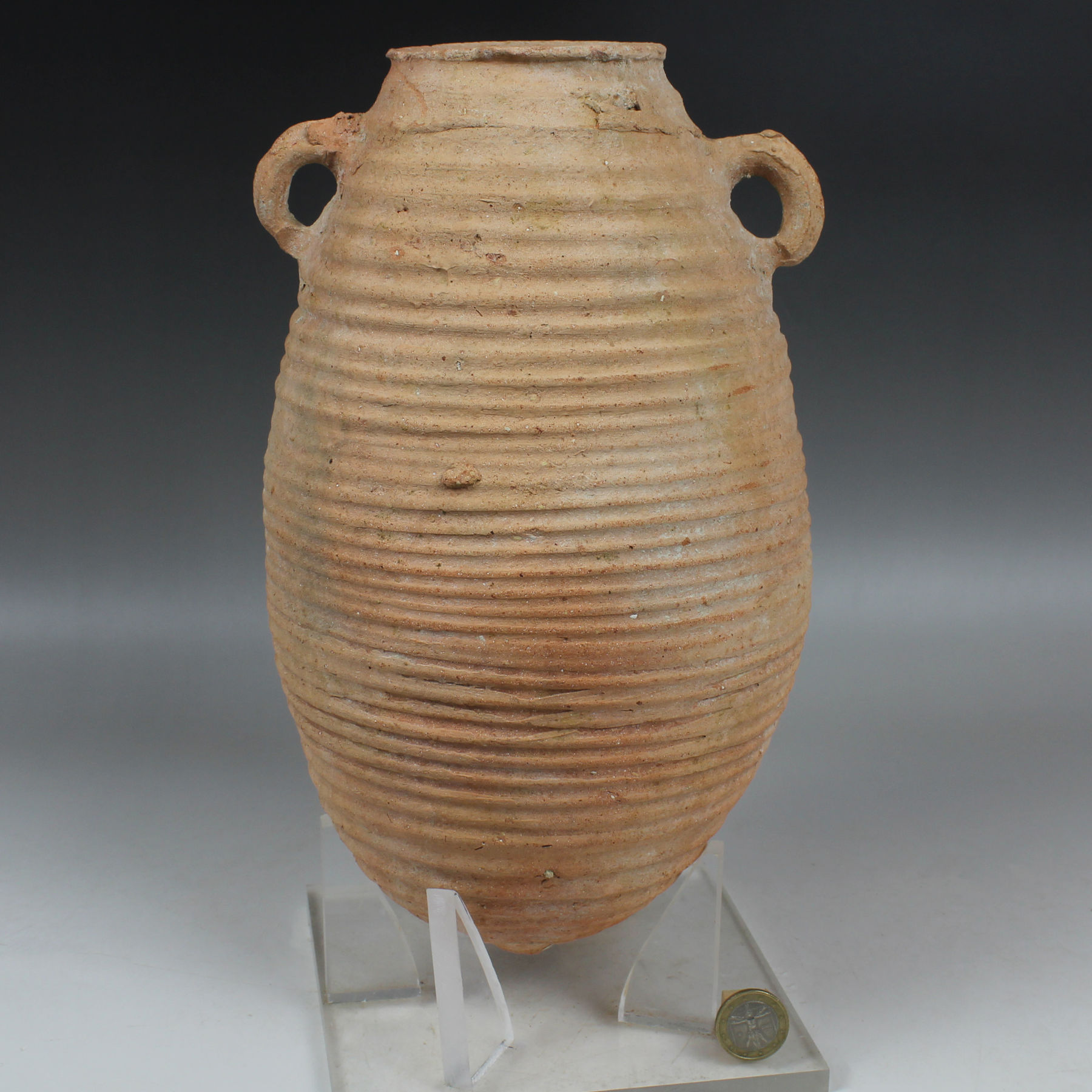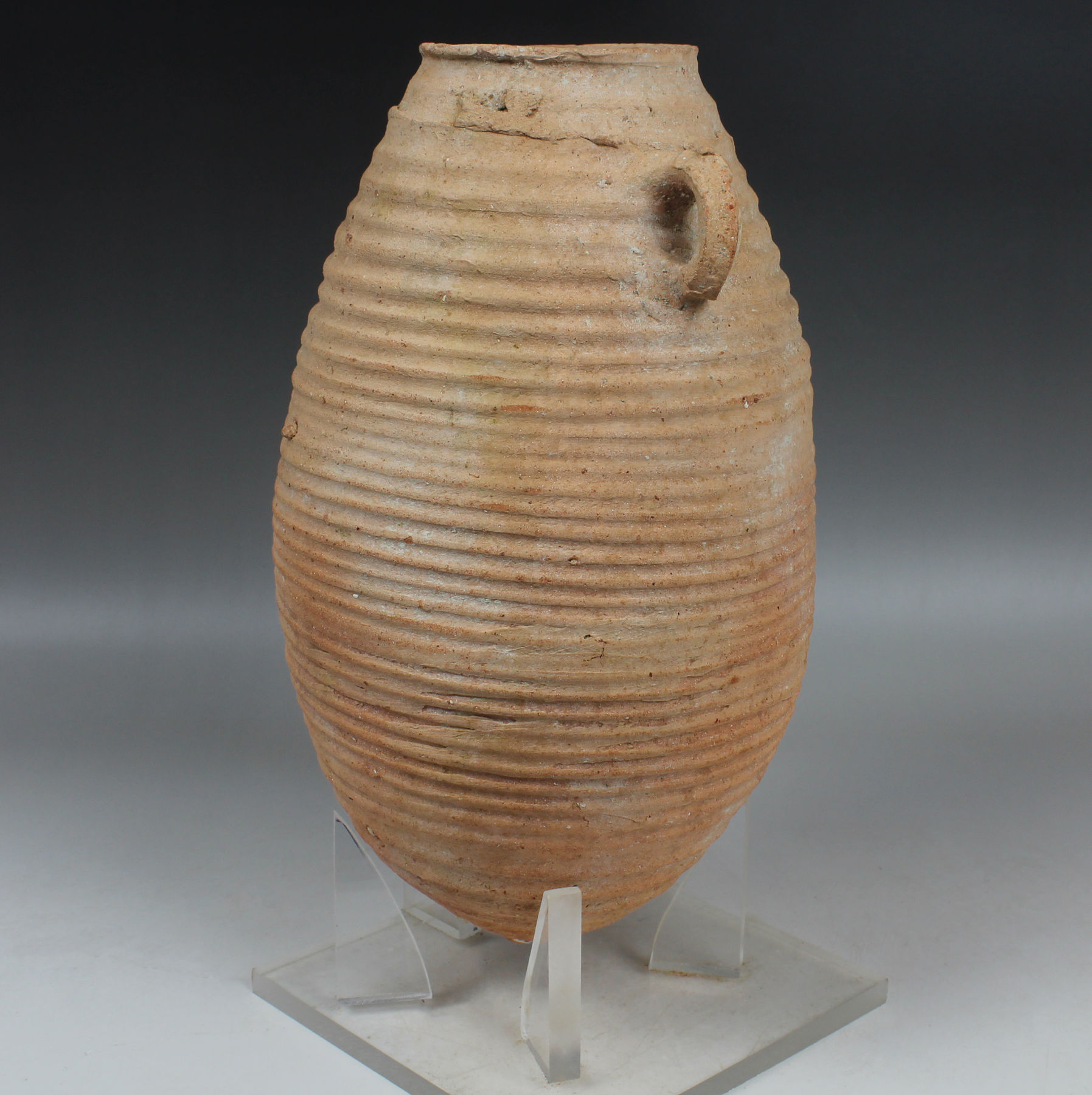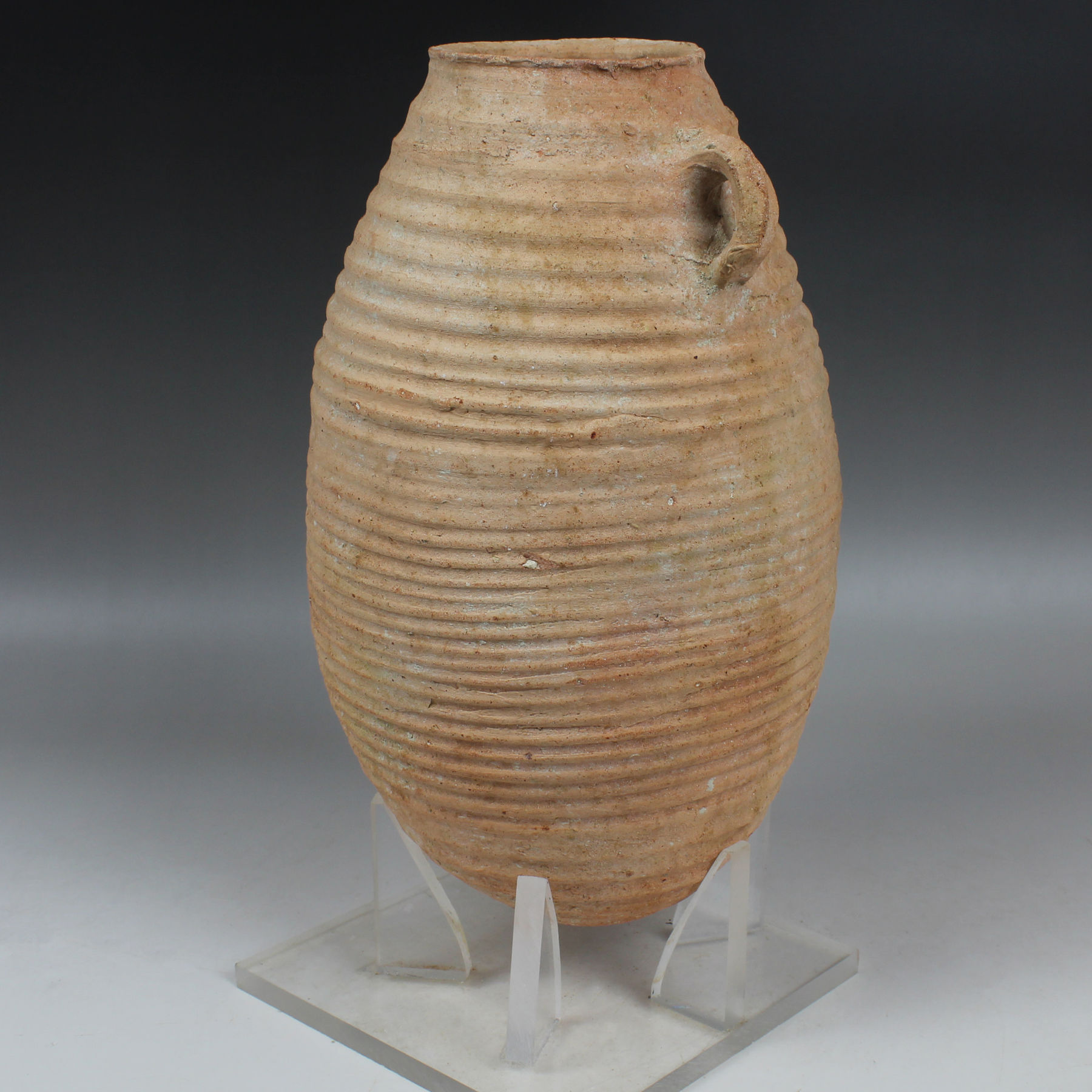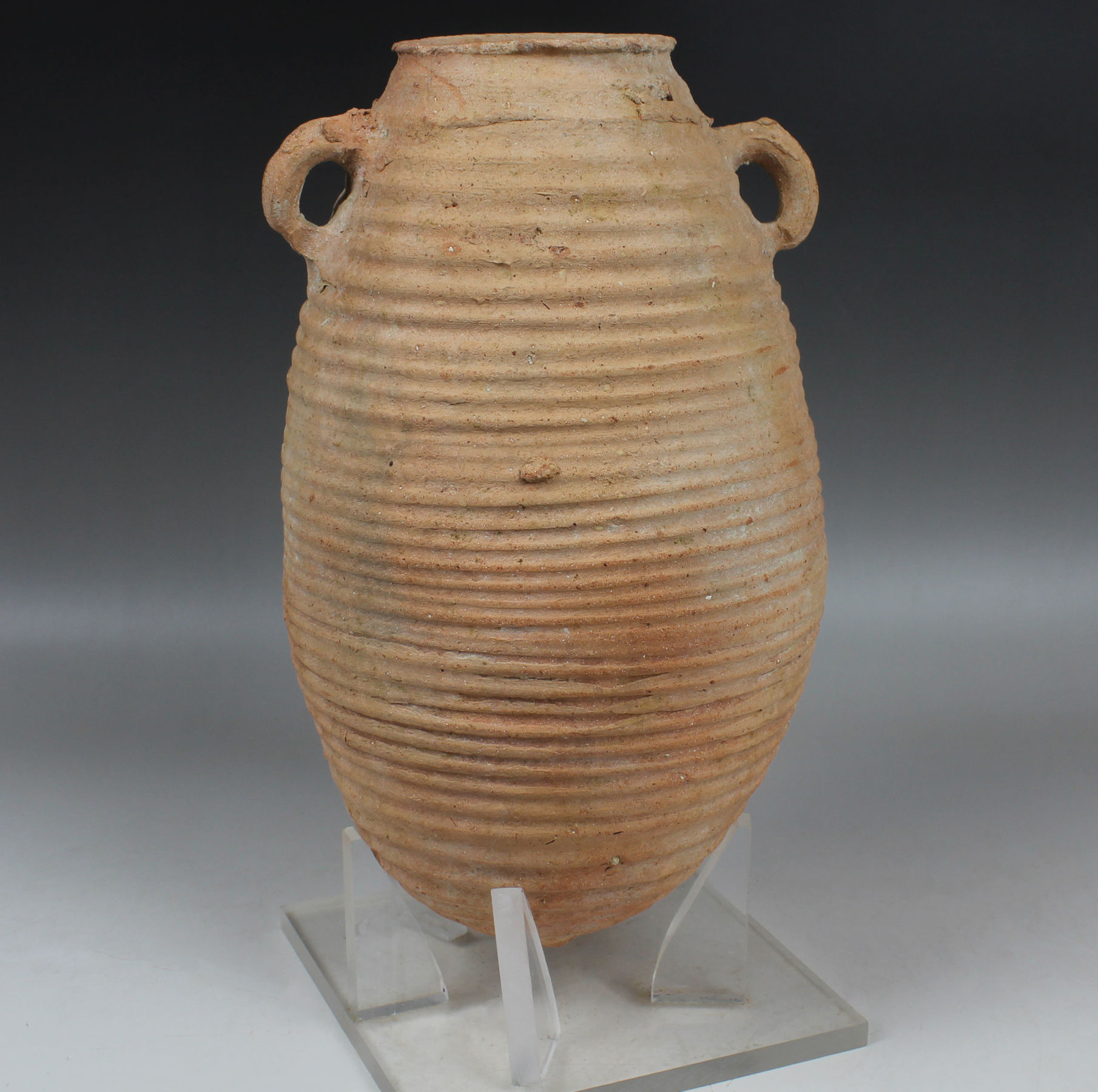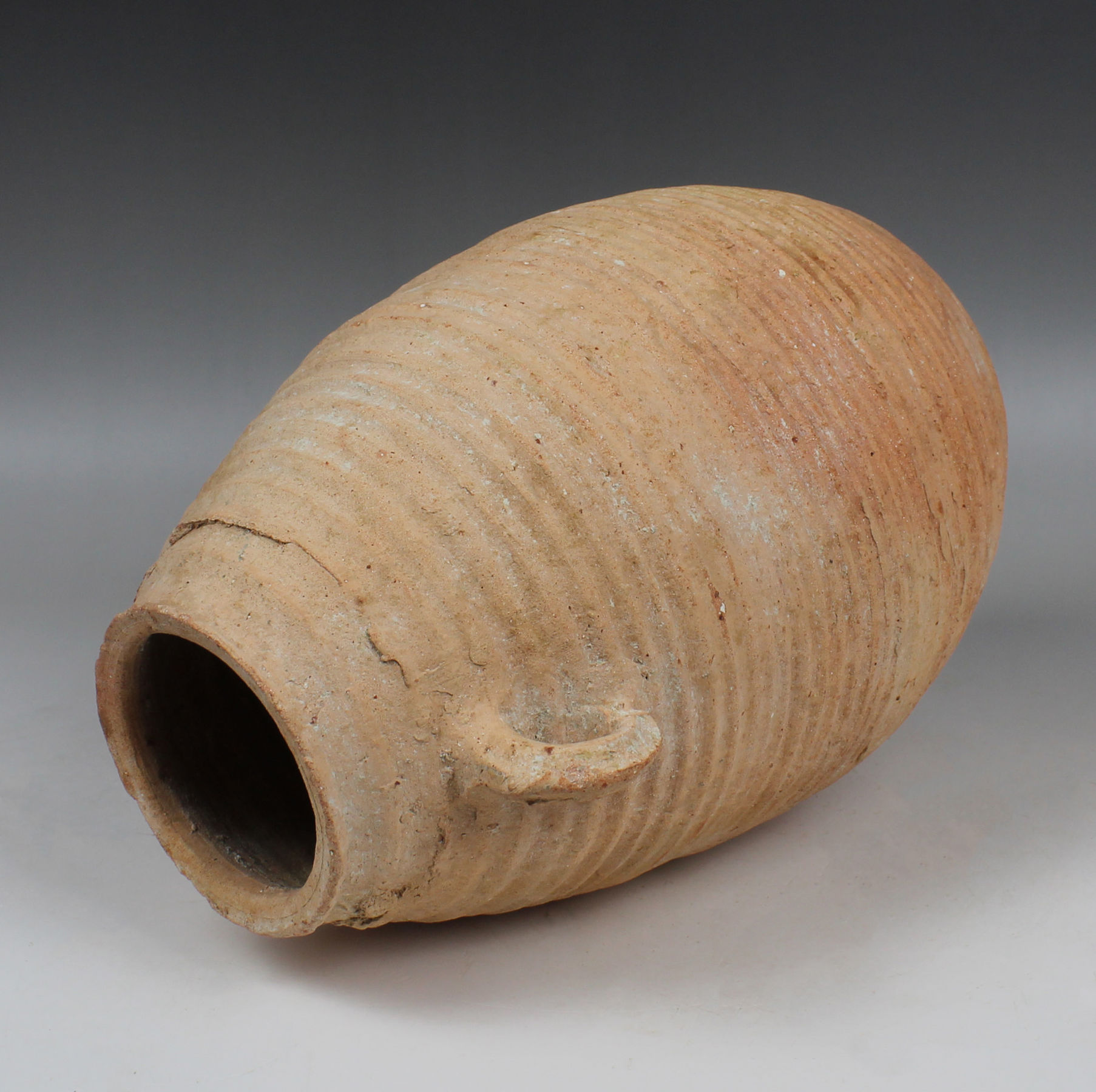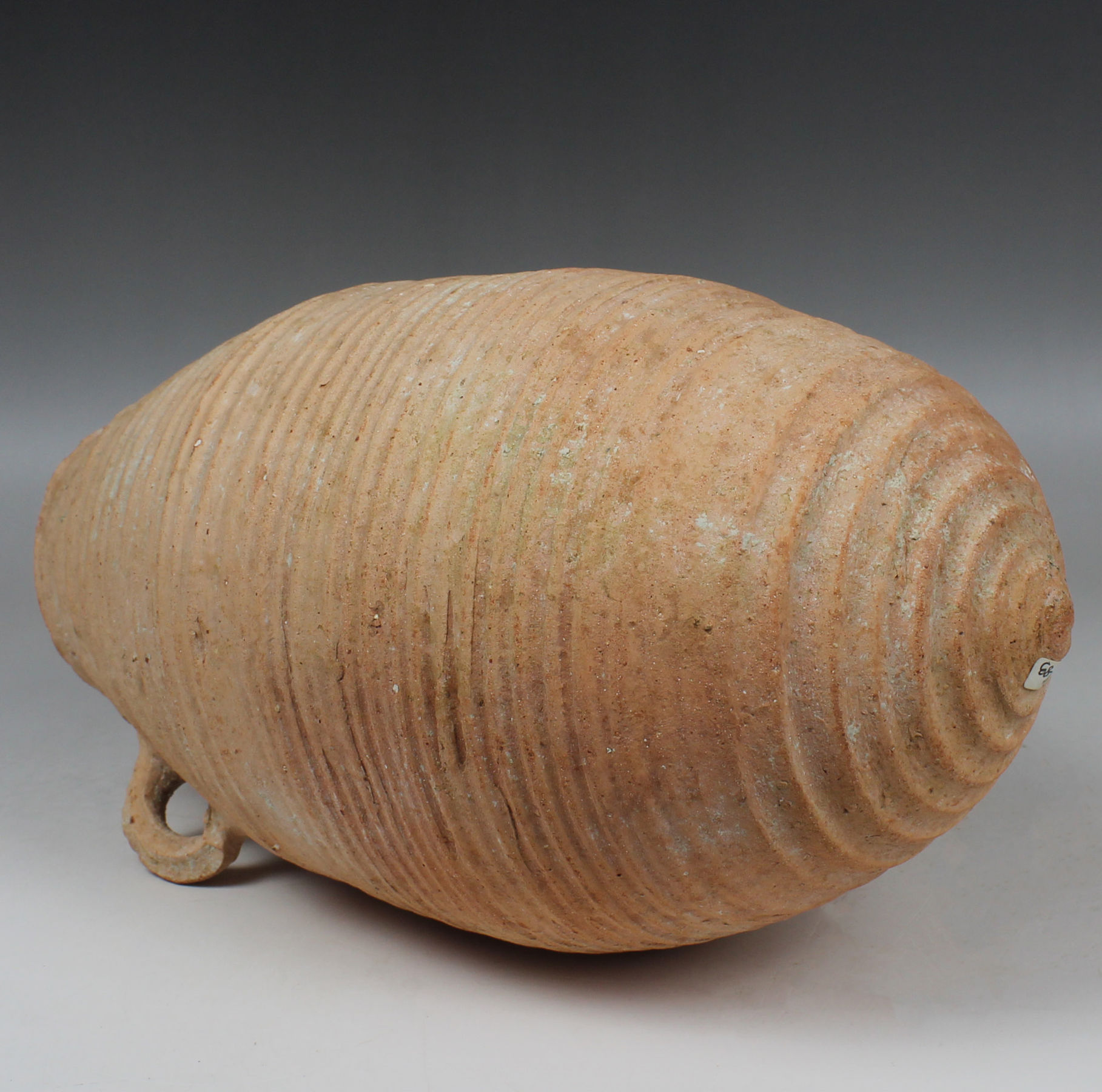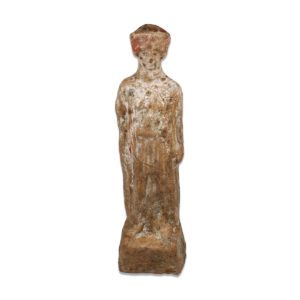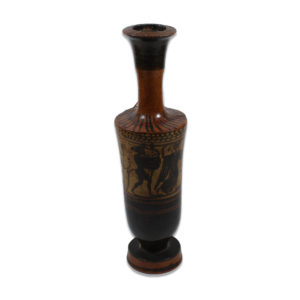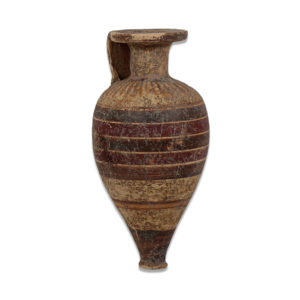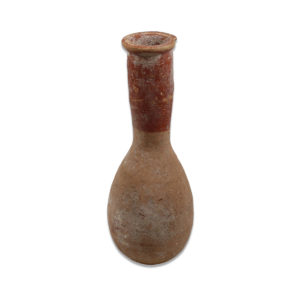Description
| ITEM | Amphora, Type Proto-Gazan |
| MATERIAL | Pottery |
| CULTURE | Late Hellenistic / Early Roman |
| PERIOD | 1st Century B.C – 1st Century A.D |
| DIMENSIONS | 290 mm x 165 mm (without stand) |
| CONDITION | Good condition. Includes stand |
| PROVENANCE | Ex Emeritus collection (USA), collected from the 1950’s to the 1980’s by a distinguished university professor who served as Department head, Dean and Vice President of a major university. |
| PARALLEL | J. BARAKO, T., Amphoras through the ages, p. 458, Amphora 28 |
Hellenistic and Roman amphorae are outstanding examples of ancient ceramics that played a pivotal role in the logistics and trade of Greek and Roman civilizations. Hellenistic amphorae, dating from the Hellenistic period (approximately 323-31 BCE), were notable for their variety of shapes and decorations. They were used to transport a wide range of products, from olive oil and wine to salted fish. Some Hellenistic amphorae featured inscriptions that provided valuable information about their content and origin, facilitating commercial management.
Roman amphorae, continuing the Hellenistic tradition, evolved during the Roman Empire (1st century BCE – 5th century CE). They were even more diverse in terms of shape and size and were mass-produced to meet the growing needs of the vast Roman Empire. In addition to their role as transport containers, Roman amphorae were also used for governmental purposes, such as the distribution of food rations to citizens. Roman ceramics often bore marks or seals that allowed the tracing of their origin and content


